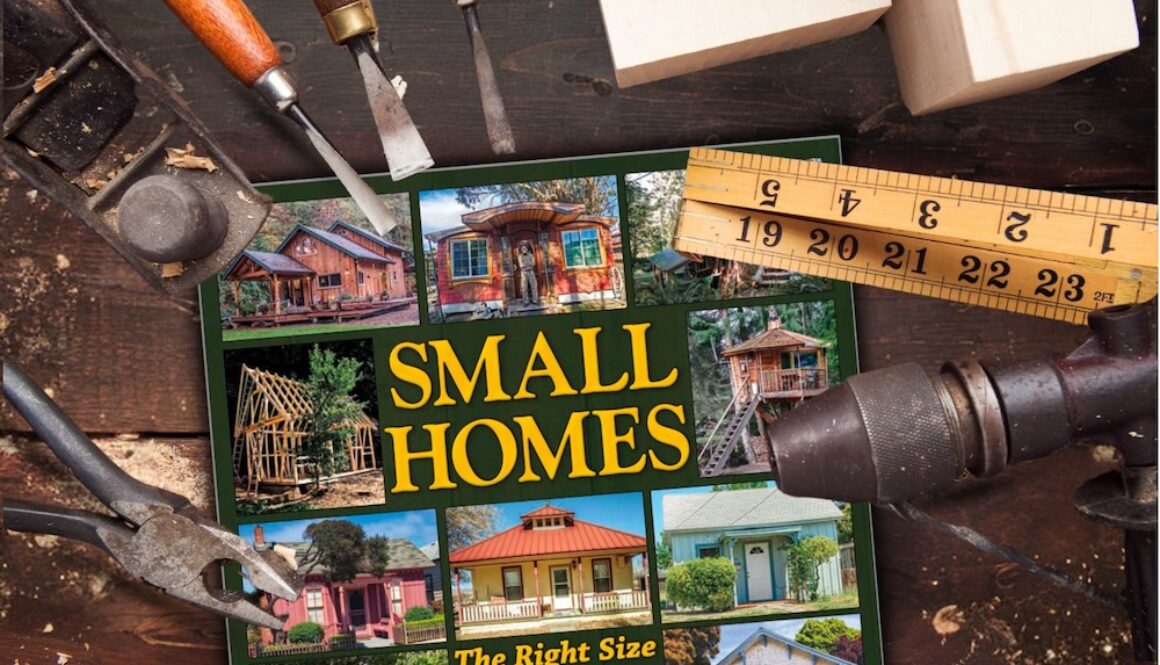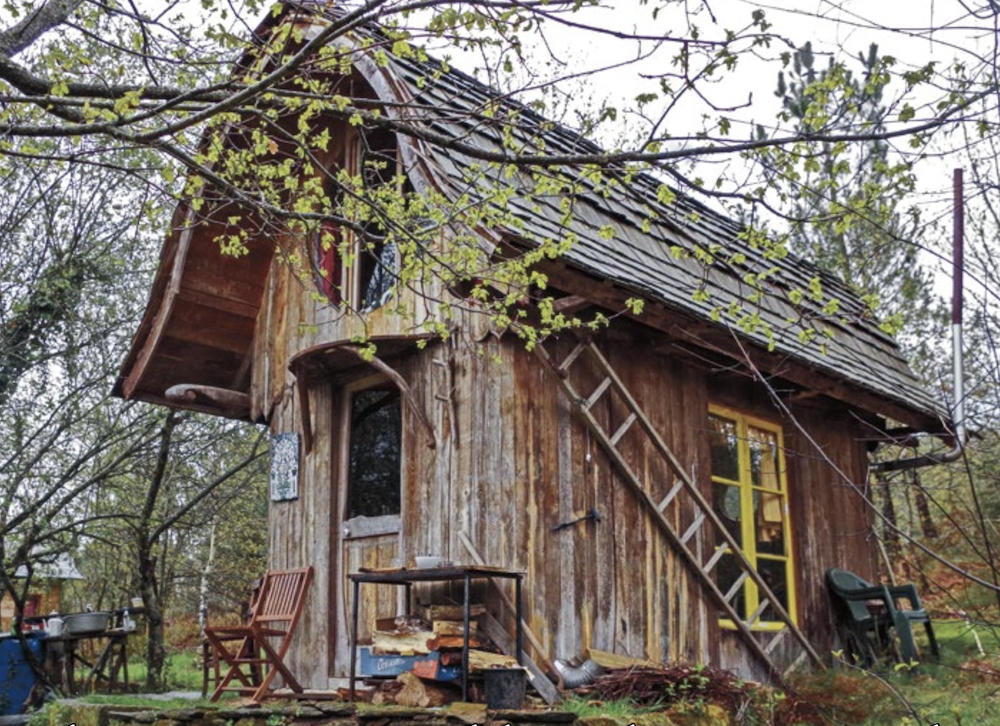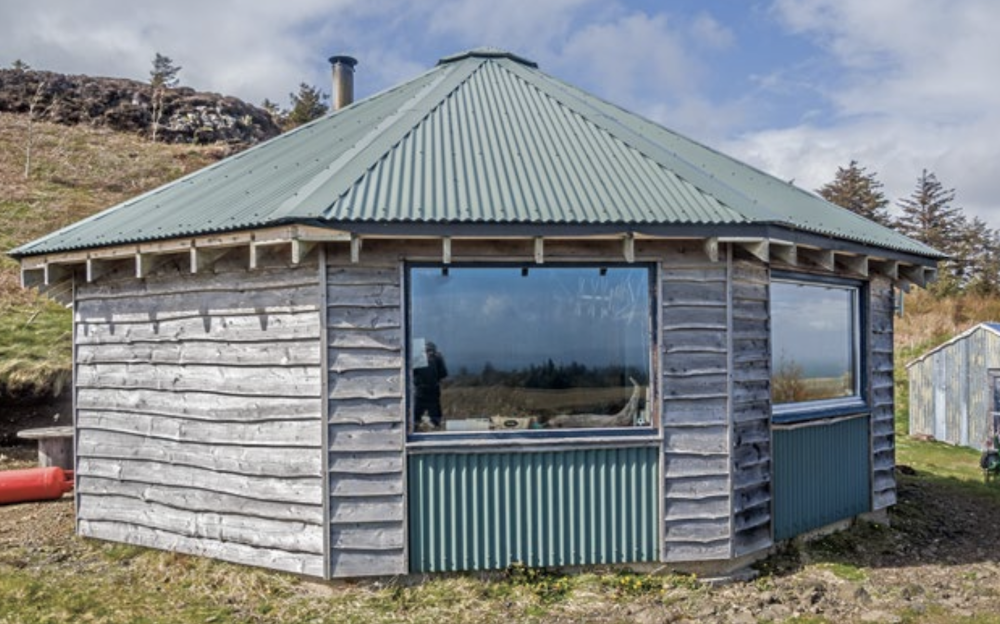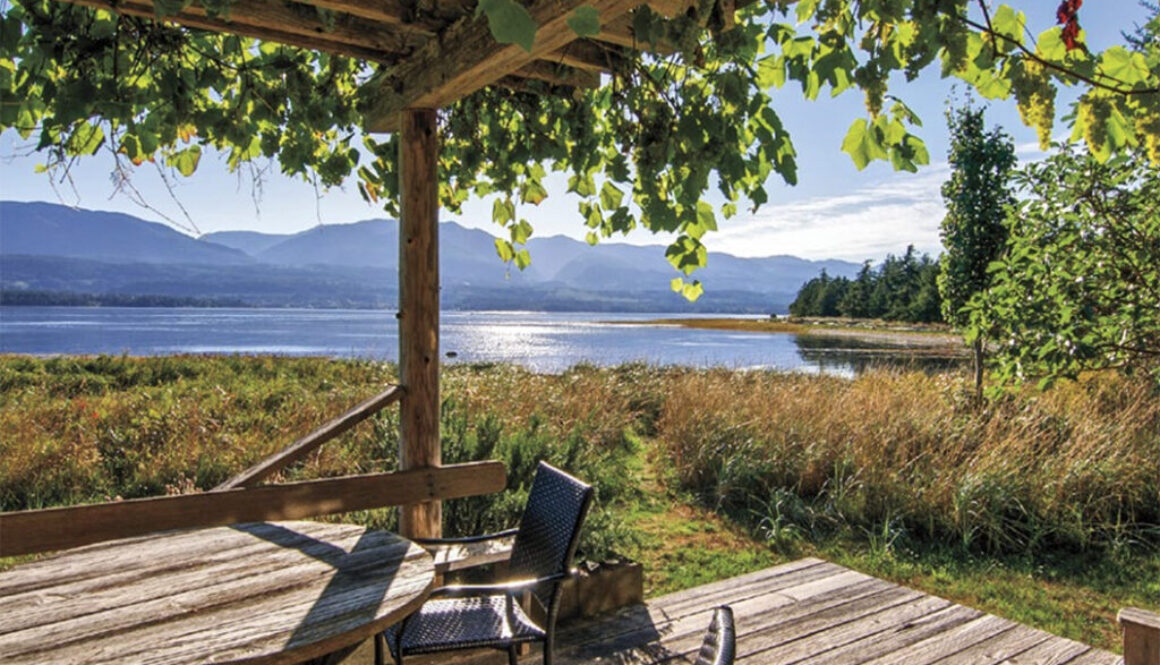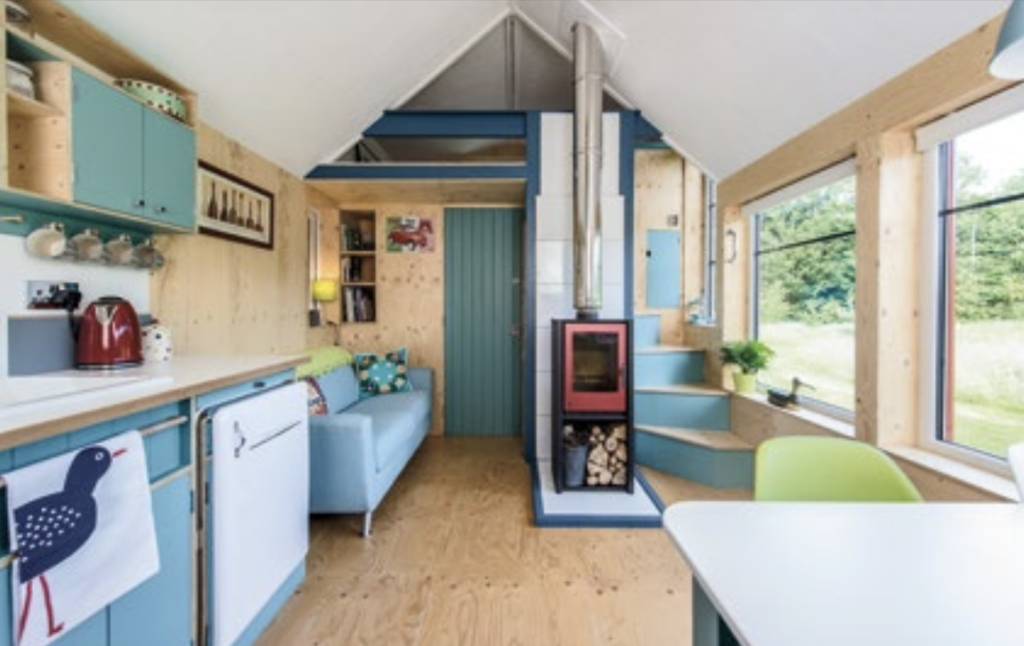The Timeless Appeal of Sustainable Living: 50 Years Strong
Author Lloyd Kahn shared this in a blog post just a few years ago: “I’ve had such wonderful contacts with 20- to 30-year-olds recently. They want to figure out how to create at least some of their own shelter and food. They like what we were doing in the ’60s and ’70s. They’ve discovered The Whole Earth Catalog and Shelter—50 years later. I’ve been waiting for you guys! (Not to mention 3-year-old Maggie of San Francisco, whose favorite book for the last year has been one of our mini-copies of Tiny Homes. Her mom says she’s read it over and over and keeps it next to her bed.)”
This shift towards small homes reflects a desire for personal fulfillment and financial stability—and demonstrates a growing understanding of the interconnectedness between humans and the environment. As these young adults continue to shape the world, their values and choices will significantly impact our planet’s future.
In Small Homes, Lloyd has collected stories from members of the younger generations who have embraced this evolving mindset and continue to work towards a more sustainable, mindful, and fulfilling way of living. Below are a few of their stories.
Sustainability is independence.
On page 60, “French Teenager Builds Cabin in Woods” tells the story of Menthé, who started creating structures when he was 3 years old, playing in the woods. His parents had a building book that he noticed when he was growing up, and he began to construct a cabin for himself at age 17. He used natural, inexpensive materials. It took him three years to build it, and he lived in it for two. His motivation was a desire for some independence. “It was a real gift to know that I could be self-sufficient in house building,” Menthé said.
Sustainability is practical.
On page 120, readers learn about “Karl’s Round House on a Scottish Island.” Karl Harding decided to move to an island at age 27. There, he worked as a welder, gaining knowledge on how to assemble things. Karl worked on four houses before building his own, which taught him to be practical. He went with a 10-sided round house for the structural strength and the challenge of building round. Due to limited funds, Karl used recycled and refurbished materials, such as sheep’s-wool fleece for insulation and reclaimed wood from a community hall for the floor, to develop his place.
Sustainability is freedom.
On page 138, there’s the story of “The Little Red-Haired Girl in the Little Yellow House.” Jes Leneé had dreamed of building a small cottage with a garden on a plot of land. At age 24, with the help of family and friends, she did. She drew up house plans that included 16-foot cathedral ceilings and 10 windows. Her little yellow cottage was completed in just 6 months. She wanted to be debt-free as a traveling musician, but she still wanted a home base. Jes believes, “No matter how small the space is, a lot of life can blossom and bloom.”
These examples illustrate how other young adults can build or remodel a small place of their own and create a sustainable lifestyle. By choosing experiences over possessions, time over money, and nurturing their connections with nature, these inspired young people can pave the way for a brighter and more balanced future for themselves and future generations.

